Fan operation characteristic values
| Q | [m3/h], [m3/s] |
| Δptot = Δpst + Δpd | [Pa] |
| Δpst = Δptot – Δpd | [Pa] |
| Δpd= ρ/2 * c2 | [Pa] |
| ρ | [kg/m3] |
| T | [°C], [K] |
| n | [1/min] |
| Nw | [W], [kW] |
| N | [W], [kW] |
Fan laws
The flow data are presented in the diagrams – fan characteristics. The diagrams directly relate to the model fans that have been designed and tested in the normative measuring channel. As the clear market leader among fan manufacturers, the company has a great deal of knowledge in the selection and control of fans. In the case of complex installations with various possible adjustments, the customer is informed of all possibilities.
1.speed control
A fan motor controlled by a frequency converter has different speeds.
Below are the characteristic curves showing the change in individual fan parameters as a function of speed. The graph shows the change in output, pressure, power, efficiency and sound power.
The air volume changes in direct proportion to the fan speed:

The static pressure varies in quadrature of the fan speed:
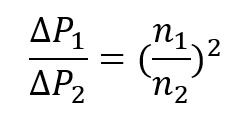
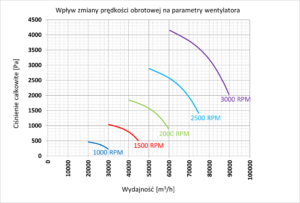
The fan power varies in the third power of the speed: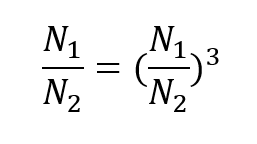
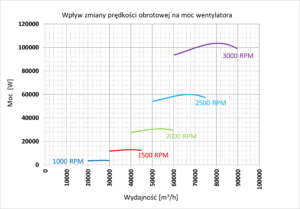
In contrast, sound power varies on a logarithmic scale, i.e. 50 decimal logarithms in relation to speed:

2. Adjustment by changing the diameter
It is also possible to increase or decrease the fan diameter in the system. The flow parameters and power output will then change as follows:
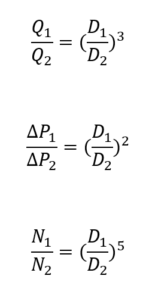
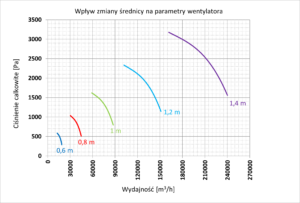

Subsequently, the acoustic power changes according to the relationship:

3. Change in density
In most cases, the density of air is ρ=1.15 [kg/m³](at sea level and at 20°C). The density depends on the temperature, pressure, humidity of the medium and the altitude above sea level. As an engineering company, we take a meticulous approach to the subject of selection and analyse the entire operating cycle. We take into account the conditions at the time of fan start-up, key operating moments, the influence of the environment and the parameters of the medium. In this way, we optimise the operation of each of our fans.


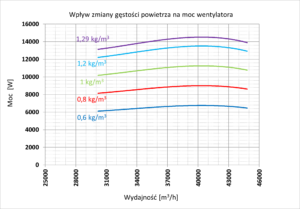
The sound power remains constant when the density changes:








